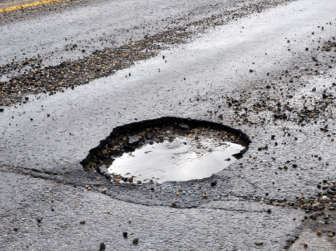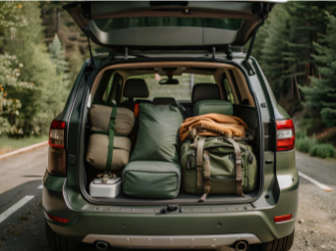Not all dogs take naturally to car rides, and some can even become anxious or fearful during the journey. The good news is that with a little patience, preparation, and some positive reinforcement, you can help get your dog used to car travel.
Car travel with your furry friend can be a fantastic experience for both you and your dog, whether you're planning a road trip or just a quick visit to the veterinarian. However, not all dogs take naturally to car rides, and some can even become anxious or fearful during the journey. The good news is that with a little patience, preparation, and some positive reinforcement, you can help get your dog used to car travel.
In this blog, we'll share some valuable tips on how to get your dog used to car travel.

Begin by taking your dog on brief drives around the block or to a nearby park. This gradual introduction to the car can help them get used to the sights, sounds, and sensations associated with being in a moving vehicle.

Make the car a fun and positive place for your dog. Give your dog a special treat or toy that they only get in the car, which will make them look forward to car rides. You can even feed your dog their meals in the car to reinforce positive associations or bring along their favourite toys, treats or blankets.

Before heading off on longer trips, let your dog spend time in the stationary car with the engine off. This will help them get comfortable with the car.

Once your dog is comfortable with short rides, gradually increase the distance of your trips. Start by extending your drives to nearby parks, friends' houses, or other places your dog enjoys. For longer drives, plan regular breaks for all passengers, including your dog, to stretch and refresh. This also helps reduce motion sickness.

Reward your dog for good behaviour during car rides. Give them treats, praise, and petting when they remain calm. Positive reinforcement helps your dog associate car rides with pleasant experiences.

If your dog is nervous during car travel, consider gradually exposing them to the things that make them anxious. For example, if they dislike the sound of the engine, sit in the car with the engine running without driving. This gradual exposure can help desensitise your dog over time.

If your dog's anxiety or fear of car travel persists or worsens, consider seeking guidance from a professional dog trainer or a veterinary behaviourist. They can provide specialised advice and training to address your dog's specific needs.
Remember that each dog is unique, and it may take time for them to get used to car travel. By following these tips and tailoring your approach to your dog's individual needs, you'll be well on your way to enjoying stress-free car journeys together with your furry friend.

If your dog sheds a lot, cover your car seats with old blankets, towels and pillows. Have cleaning supplies on hand so you can clean up any mess as quickly as possible – some dogs experience car sickness and might get sick in your car.
If you’re passionate about keeping your car in tip-top shape, consider purchasing a Scratch & Dent Plan through MotorHappy. A Scratch & Dent Plan covers your car for minor damage to the interior and exterior of your car. With a dog travelling in your car, you’ll feel relieved to know your Scratch Scratch & Dent Plan includes items like scratches and scuffs to door handles, seat stitching, carpet repair, and much more. Click on this link to find out more about a Scratch & Dent Plan through MotorHappy.
The new Ford Puma on the Prowl
Ineos Grenadier: A powerful new SUV on SA’s roads


